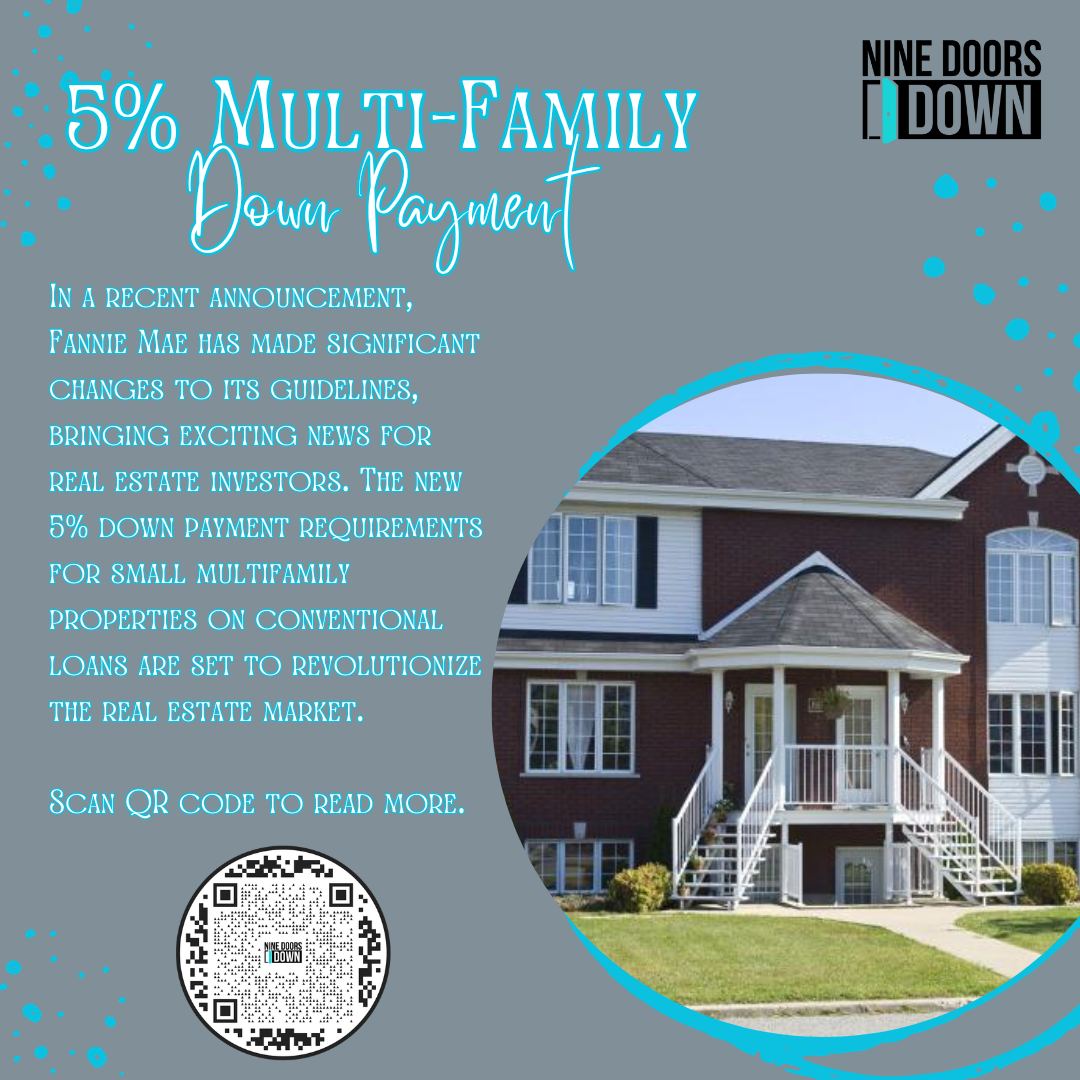In a recent announcement, Fannie Mae has made significant changes to its guidelines, bringing exciting news for real estate investors. The new 5% down payment requirements for small multifamily properties on conventional loans are set to revolutionize the real estate market. This blog post will delve into the details of this announcement and discuss the implications for investors.
Fannie Mae’s recent announcement has brought great news for house hackers and real estate investors. The 5% down payment requirements for small multifamily properties on conventional loans are now available. This is a significant change as historically, Fannie Mae required 15-25% down payment for such properties.
Previously, the only low down payment option for small multifamily properties was through FHA loans. However, FHA loans came with certain limitations, such as the self-sustainability rule and mortgage insurance that stays for the life of the loan. Additionally, first-time homebuyer programs like HomeReady and Home Possible had income limits that made it difficult for many investors to qualify.
Benefits of the New Guidelines:
The new guidelines from Fannie Mae address these limitations and offer several benefits for investors. Here are some key advantages:
1. Lower Down Payment: With the new guidelines, investors can now purchase small multifamily properties with just a 5% down payment, making it more accessible for aspiring investors.
2. No Self-Sustainability Rule: Unlike FHA loans, the new guidelines do not require the property’s rents to cover the mortgage. This flexibility allows investors to explore more opportunities without worrying about meeting strict cash flow requirements.
3. No Lifetime Mortgage Insurance: While there will be private mortgage insurance (PMI) for loans with a 5% down payment, it can potentially fall off around the 78-80% loan-to-value mark, unlike FHA loans where mortgage insurance stays for the life of the loan.
County Conforming Loan Limits:
It’s important to note that these loan products are subject to county conforming loan limits. These limits vary by county and can impact the loan amount you qualify for. It’s advisable to research the specific loan limits in your county to avoid any surprises.
Considerations for PMI:
Some investors may be hesitant to pay PMI and prefer to save up for a 20% down payment. However, it’s essential to consider the opportunity cost of waiting. Property prices may increase, and the cash flow and appreciation potential of the property could outweigh the cost of PMI. It’s crucial to evaluate the numbers and consult with a professional before making a decision.
This change opens up new opportunities and makes real estate investing more accessible. It’s important to understand the county conforming loan limits and carefully consider the implications of PMI. For more information on this loan product, reach out to a mortgage professional or visit their websites.








